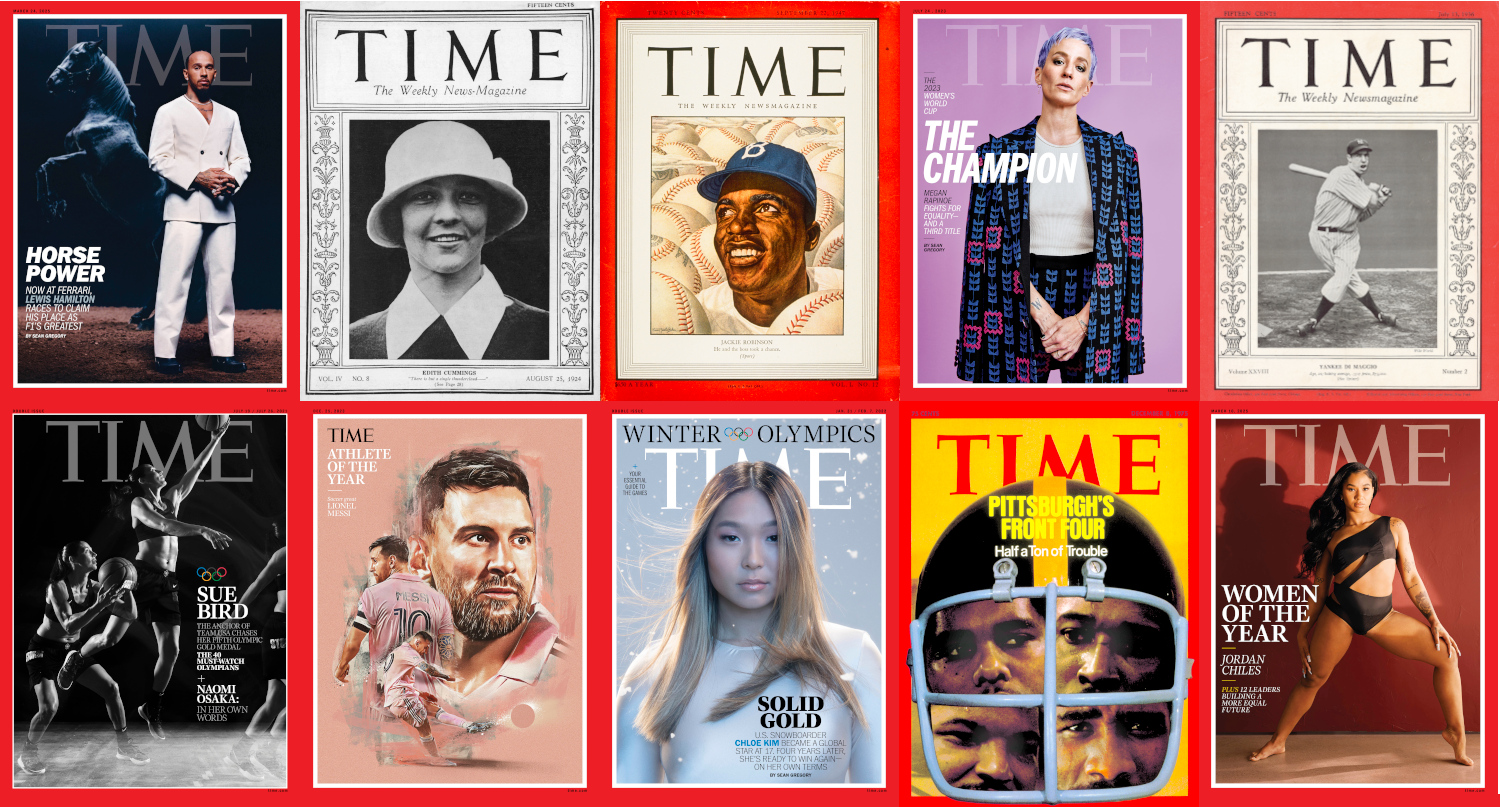From Disney’s shutdown of ABC Sports to concentrate on ESPN to The New York Times acquiring The Athletic and subsequently eliminating NYT Sports, numerous media outlets that once provided extensive sports coverage have shifted their focus, often due to corporate mergers with sports-centric entities. However, Time is charting a different course. In 2018, shortly after Meredith Corporation acquired Time Inc. in 2017, they sold the flagship Time magazine to Marc Benioff, founder of Salesforce, thereby disentangling it from other Time Inc. titles, including Sports Illustrated.
Since then, Time has delved deeper into sports than ever before, especially compared to the years (1954-2018) when it shared corporate ties with SI. Although the magazine still covered sports and occasionally featured covers about them during that time, the bulk of the sports reporting was left to its colleagues at the dedicated sports title. The newly independent Time has re-emphasized sports coverage by breaking significant news, producing documentaries (on IndyCar driver Dan Wheldon and the 2023 U.S. FIFA Women’s World Cup team), and making headlines with cover athlete selections, including notable figures such as F1 driver Lewis Hamilton and athletes of the year.
Time editor-in-chief Sam Jacobs discussed the magazine’s renewed sports strategy with Awful Announcing. He noted that sports have been a fundamental part of the publication since its inception in 1923, but they have gained more freedom in their coverage since becoming an independent entity. “There are two different ways to tell the story about Time and sports,” Jacobs remarked. “One is that we’ve covered this topic for 101 years, having featured athletes on the cover as early as 1924—it’s ingrained in our DNA and history. The other perspective is that our liberation as an independent publisher allows us to pursue the stories we’re most passionate about.”
While Time did produce some sports coverage during the Time Inc. era, Jacobs acknowledged that sister publications often impacted the depth and focus of their reporting. He explained, “When I started at Time nearly 12 years ago as part of Time Inc., we wouldn’t have an athlete of the year because Sports Illustrated handled that, nor would we have an entertainer of the year since Entertainment Weekly and People occupied that space. All those publications stem from Time and share our heritage and focus.” Jacobs also expressed the excitement of pursuing sports stories without the constraints of competing publications, emphasizing that selected coverage highlights influential figures in sports. “When it comes to who Time focuses on, we’re concentrated on leadership and individuals who are shaping the future, and athletes are increasingly at the forefront of that narrative.”
He added that the overarching goal is to engage with people across various subjects, stating, “Every area we cover demands understanding and nuance, but at its core, Time is about people. We look at individuals as a means to tell stories about societal changes, trends, and complex issues.” Given that Time caters to an audience beyond hardcore sports enthusiasts, Jacobs highlighted the importance of uncovering influential figures who resonate beyond mere athletic prowess. This includes individuals like Caitlin Clark, who has significantly contributed to the growth of women’s basketball, and Hamilton, whose influence transcends the racing scene through projects like a Brad Pitt-starring film F1 and co-chairing this year’s Met Gala.
“When considering which athletes to cover, we focus on those transcending their sport,” Jacobs noted. “Athletes like Lewis Hamilton are among the most consequential people on the planet. It’s been invigorating to identify those pivotal moments.” He elaborated on the substantial global readership of Time, which exceeds 120 million, indicating that while not every reader might engage with Hamilton, upcoming events will elevate his profile further.
https://embeds.beehiiv.com/a79076af-c414-47ef-96e6-0322628bcaaf" data-test-id="beehiiv-embed" width="480" height="320" frameborder="0" scrolling="no" style="border-radius: 4px; border: 2px solid #e5e7eb; margin: 0; background-color: transparent;
Jacobs emphasized the remarkable work by his reporters in enhancing Time’s sports narrative, citing Sean Gregory, a core sports reporter, as a significant contributor, alongside Alice Park, who expertly covers figure skating and gymnastics. Their experience is invaluable as they gear up for the next Olympics. Acknowledging it as a collective effort, Jacobs said, “While I love what Sean and Alice are doing, the entire newsroom is engaged in telling these stories in a way that resonates with readers.”
A critical aspect of Time’s recent impact on sports has been its focus on women’s sports coverage, leveraging this moment when female athletes are significantly influencing both sports and society. “Women are making substantial strides in sports and using that platform for societal change,” Jacobs remarked. “Time has featured athletes on its cover since 1924, including the first female athlete, golfer Edith Cummings. In the last decade, we’ve featured 20 female athletes on our cover, a stark contrast to just five in the previous decade.” Jacobs highlighted that this shift reflects genuine attention being paid to female athletes, as their voices and platforms grow stronger.
Another avenue through which Time appeals to athletes is its diverse platforms and live events. Jacobs expressed excitement about storytelling across various media, citing two recent documentaries—one for Netflix about the Women’s World Cup team and another for Max on Dan Wheldon—as examples of this approach. He further elaborated, “We integrate coverage of female athletes across all our platforms, including our Women of the Year program, where we spotlight women leading in sports.”
Time’s events and awards, traditional for many media outlets, stand out for how much actual news they generate, exemplified by Caitlin Clark’s interview after being named athlete of the year. “We’re intentional about utilizing every platform to tell stories,” Jacobs stated, contrasting their current approach with past practices where magazines were issued weekly but lacked continuous engagement. “This approach is beneficial for our business and enriches reader experience, providing varied moments for engagement with Time outside traditional print cycles. Drumming up these interactions not only helps us tell compelling stories but also allows us to connect authentically with influential figures.”

